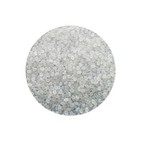Polypropylene: a thermoplastic resin made from the polymerization of propylene
Polypropylene is a thermoplastic resin obtained by polymerizing propylene. According to the arrangement of methyl groups, it is divided into three types: isotactic polypropylene, atactic polypropylene and syndiotactic polypropylene.
If the methyl groups are arranged on the same side of the molecular main chain, it is called isotactic polypropylene. If the methyl groups are arranged in disorder on both sides of the molecular main chain, it is called atactic polypropylene. When the methyl groups are arranged alternately on both sides of the molecular main chain, it is called between Regular polypropylene. In general industrial polypropylene resins, the isotactic structure content is about 95%, and the rest is random or syndiotactic polypropylene. Industrial products are mainly composed of isotactic substances. Polypropylene also includes copolymers of propylene with small amounts of ethylene. Usually translucent colorless solid, odorless and nontoxic. Due to its regular structure and high crystallization, the melting point can be as high as 167 °C. Heat resistance and corrosion resistance, and the products can be sterilized by steam are its outstanding advantages. With low density, it is the lightest general-purpose plastic. The disadvantage is that it has poor low temperature impact resistance and is easy to age, but it can be overcome by modification.
The copolymer-type PP material has lower heat distortion temperature (100°C), low transparency, low gloss, and low rigidity, but has stronger impact strength. The impact strength of PP increases with the increase of ethylene content. . The Vicat softening temperature of PP is 150°C. Due to the high degree of crystallinity, this material has good surface stiffness and scratch resistance properties. PP does not have environmental stress cracking problems.
The melt mass flow rate (MFR) of PP is usually between 1 and 100. PP materials with low MFR have better impact resistance but lower ductility. For the same MFR material, the impact strength of the copolymer type is higher than that of the homopolymer type. Due to crystallization, the shrinkage rate of PP is quite high, generally 1.6~2.0%.




